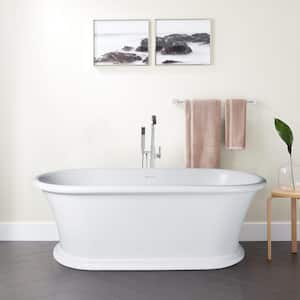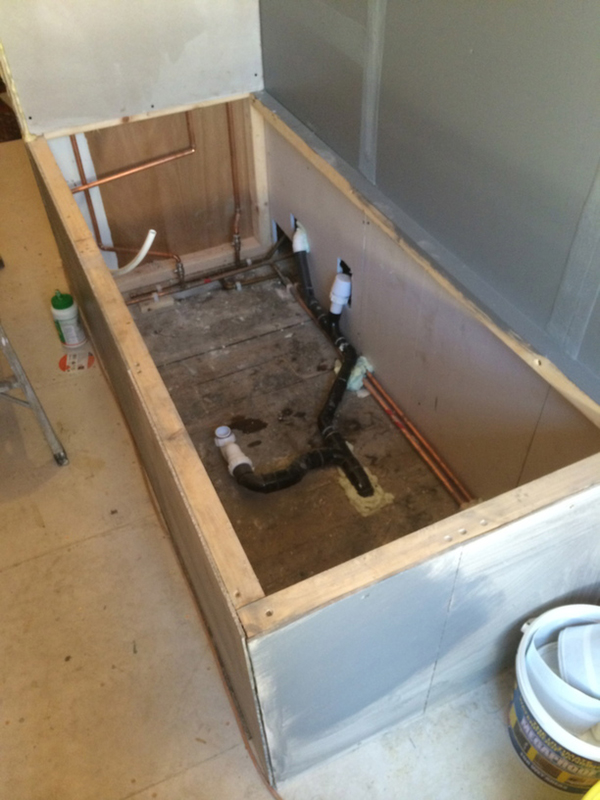The author is making a few great observations on the subject of Tools You Need to Install a New Bathtub in general in the article just below.

Installing a bathtub isn't specifically brain surgery, however it does require solid plumbing, woodworking, as well as in some cases, tiling skills. Changing an old bathtub with a brand-new one is likewise a moderately hard job. If the old bathtub is readily easily accessible, the task can relocate quickly; if you need to open a wall to remove the old bathtub and also position the new bathtub, the job is a lot harder. In either situation, the job is within a home handyman's abilities, although you will certainly need an assistant to leave the old bathtub and embeded in the brand-new one. Ensure you have actually certified yourself for the task as well as fit trying it. Rather than employing a contractor to take control of a halfway-completed project, it is better to think about utilizing one prior to you start. Possibilities are you might need a professional plumber to make tube connections.
This article will help you install a brand-new bath tub in your washroom if you have actually already purchased a new bathtub and do not need to transform the plan of your previous water pipelines.
Your tools as well as material list should make up the following:
Planning for the Installation
Firstly, the sustaining framework provided with the bathroom must be fitted (if needed) according to the producer's directions. Next off, fit the faucets or mixer to the bath tub. When suitable the faucet block, it is very important to ensure that if the faucet features a plastic washer, it is fitted between the bath as well as the faucets. On a plastic bathroom, it is additionally reasonable to fit a sustaining plate under the faucets unit to prevent strain on the bathtub.
Fit the flexible tap ports to the bottom of both taps using 2 nuts as well as olives (occasionally provided with the bathtub). Fit the plug-hole outlet by smearing mastic filler round the sink electrical outlet opening, and then pass the outlet through the hole in the bathroom. Make use of the nut provided by the producer to fit the plug-hole. Take a look at the plug-hole electrical outlet for an inlet on the side for the overflow pipeline.
Next, fit the end of the flexible overflow pipeline to the overflow outlet. Afterwards, screw the pipe to the overflow face which need to be fitted inside the bath. See to it you use all of the supplied washers.
Connect the catch to the bottom of the waste electrical outlet on the tub by winding the string of the waste electrical outlet with silicone mastic or PTFE tape, and screw on the trap to the electrical outlet. Attach the bottom of the overflow tube in a similar manner.The bathroom should now be ready to be fitted in its last placement.
Removing Old Touches
If you require to replace old faucets with brand-new ones as a part of your installment, after that the first thing you need to do is disconnect the supply of water. After doing so, switch on the taps to drain any kind of water continuing to be in the system. The procedure of getting rid of the existing faucets can be rather troublesome because of the restricted access that is commonly the instance.
Utilize a basin wrench (crowsfoot spanner) or a faucet tool to reverse the nut that connects the supply pipelines to the taps. Have a towel prepared for the remaining water that will certainly come from the pipelines. Once the supply pipelines have actually been eliminated, make use of the same device to loosen the nut that holds the faucets onto the bath/basin. You will need to quit the single taps from transforming throughout this process. When the faucets have actually been eliminated, the holes in the bath/basin will certainly need to be cleaned of any type of old securing compound.
Before moving on to fit the new faucets, compare the pipe links on the old faucets to the brand-new taps. If the old taps are longer than the brand-new faucets, after that a shank adapter is needed for the brand-new faucets to fit.
Installing the Bathtub
Utilizing the two wood boards under its feet, position the bath tub in the called for placement. The wood boards are valuable in uniformly spreading the weight of the bathtub over the area of the boards instead of focusing all the weight onto four small factors.
The following goal is to guarantee that the bathtub is leveled all round. This can be achieved by examining the level as well as changing the feet on the bathtub till the level reads degree.
To set up taps, fit all-time low of the furthest flexible tap adapter to the suitable supply pipeline by making a compression join; then do the exact same for the other faucet.
Switch on the water supply and also check all joints and also new pipework for leakages and tighten them if needed. Load the tub as well as also check the overflow outlet and also the normal electrical outlet for leakages.
Finally, repair the bath paneling as explained in the maker's instruction manual. Tiling and securing around the bath tub needs to wait up until the bath tub has been used a minimum of when as this will certainly resolve it into its final position.
Fitting New Touches
If the tails of the brand-new faucets are plastic, after that you will certainly require a plastic adapter to stop damages to the string. One end of the adapter fits on the plastic tail of the faucet and also the various other end supplies a link to the existing supply pipes.
If you need to fit a monobloc, then you will certainly require lowering couplers, which attaches the 10mm pipeline of the monobloc to the standard 15mm supply pipeline.
Next off, position the tap in the placing hole in the bath/basin guaranteeing that the washing machines are in area in between the tap and also the sink. Protect the tap in position with the producer provided backnut. When the tap is securely in position, the supply pipes can be linked to the tails of the taps. The faucets can either be connected by utilizing corrugated copper piping or with regular tap ports. The former kind needs to be linked to the tap finishes first, tightening up only by hand. The supply pipelines can later on be attached to the other end. Tighten both ends with a spanner after both ends have actually been connected.
Tiling Around the Tub
In the location where the bathroom meets the ceramic tile, it is essential to seal the accompanies a silicone rubber caulking. This is very important as the installation can relocate sufficient to crack a stiff seal, triggering the water to pass through the wall surface in between the bathroom and also the tiling, causing difficulties with wetness and also feasible leakages to the ceiling listed below.
You can pick from a range of coloured sealers to blend in your fixtures as well as installations. They are offered in tubes and cartridges, and can securing spaces as much as a width of 3mm (1/8 inch). If you have a bigger space to load, you can load it with twists of soaked paper or soft rope. Keep in mind to always load the tub with water before securing, to enable the movement experienced when the tub remains in usage. The sealant can fracture relatively very early if you do not take into account this motion before sealing.
Additionally, ceramic coving or quadrant tiles can be utilized to edge the bath or shower tray. Plastic strips of coving, which are easy to use and also reduce to dimension, are additionally quickly readily available on the marketplace. It is recommended to fit the floor tiles using waterproof or water-proof adhesive as well as grout.
Bathtub Installation
How Important Is A Bathtub To Your Home?
High-quality baths, showers, and other bathroom updates are necessary when considering a smart investment in your home. It’s a room that you go to every day and one that is constantly being used by guests.The bathroom is one of the top trafficked rooms in a home and also one of the most valuable in terms of home resale.
Install Piping Before Tub
You will be using your existing drain and waste vent system, but pipes required include the hot and cold water supply lines and a pipe leading to a shower head. A mixing valve and shower head are also needed. Air chambers may be required.
Position the Tub
Lower the tub into place so that the continuous flange fits against the wall studs and rests on 1’x4' or 2’x4' supports. Anchor the tub to the enclosure with nails or screws inserted through the flanges into the studs.
NOTE: Remember, bathtubs and shower stalls may require support framing. A bathtub filled with water is extremely heavy, so check building codes and framing support before installing the tub.
Assemble Drain Connections
Assemble the bathtub drain connections by connecting the tub overflow with the tub drain above the trap, not beyond it. The trap will have a compression fitting that screws over the arm of the overflow assembly.
Place a Pipe For the Shower Head
First, locate a brass female threaded winged fitting and attach it to a framing support via a screw or a nail. Then run a pipe up the wall for the shower head. Sweat or solder the other side of the brass fitting to the top of the pipe.
Attaching Hot and Cold Water Lines
Attach your water lines for both hot and cold by sweating these directly into the hot and cold ports of the mixing valve. The mixing valve will be how water enters the tub’s system, not by the pipes themselves.
Install the Spout
Extend a piece of 1/2 inch pipe, or whichever length is specified in the manufacturer’s instructions, for the tub spout. Sweat on a male threaded fitting at the end of the pipe or use a brass nipple of the proper length and a 1/2 inch cap.
NOTE: At this point you should have your rough-in plumbing work inspected before proceeding further.
Check For Leaks
Restore the water pressure and check the drain connection and the supply pipes for any sign of leaking.
estore the Bathroom Wall
Replace the wall with moisture-resistant drywall as a base for your wall covering. Seal the joints between the wall and your new tub with silicone caulk as protection against water seepage.
https://www.berkeys.com/2016/12/02/bathtub-installation-dallas/

I hope you enjoyed our post about How to Install a Bathtub: Install an Acrylic Tub and Tub Surround. Thanks for spending some time to read our article post. I beg you take the time to share this write-up if you enjoyed it. We take joy in reading our article about Tools You Need to Install a New Bathtub .
Always here, call!